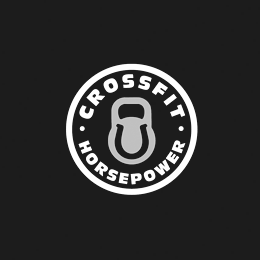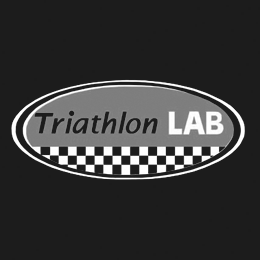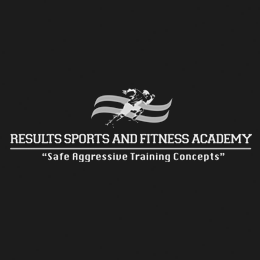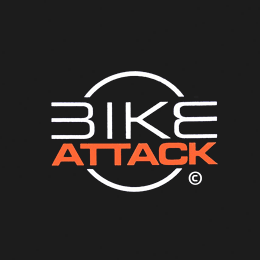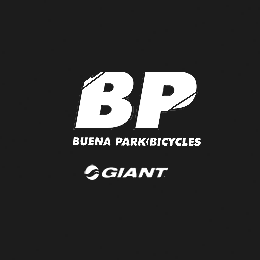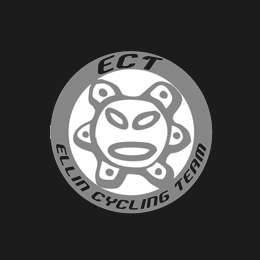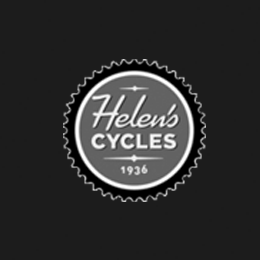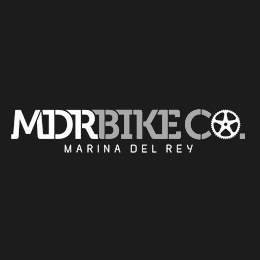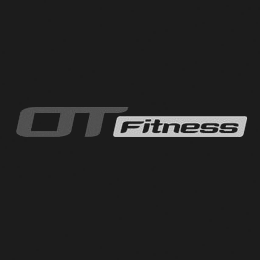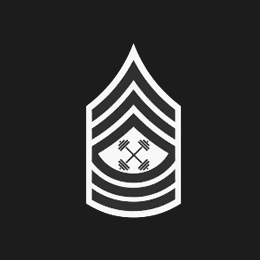Can you tell the difference?
Just getting started in a new workout routine, whether it is hill sprints every other day, adding an extra 25 laps to your swim routine, or just going to the gym more often, means you need to be aware of a few different kinds of pain.
No pain no gain right? Well, sometimes.

During a workout, you should be able to comfortably complete most of your activities. With bursts of extreme difficulty. Your body should feel that typical ‘burn’, but in your muscles ONLY. That is your body producing lactic acid, it means your muscles have had enough! But of course, we always want to push them a little farther than last time. It’s a good idea to push the burning sensation just a little bit, too much can leave you extremely sore the next day and can prevent you from continuing your workout routine.
During these intense lactic acid creating moments, your heart is beating extra fast, you are probably starting to sweat a little, and all you can focus on is how much your muscles hurt!
We want to embrace this pain for a little while, BUT (and this is a big but), if you start to feel pain ANYWHERE other than your muscles (a twinge in your back, a sharp pain in your knee, some prickling in your shoulder) STOP WHAT YOU ARE DOING.

Those sharp pains are a sign from our bodies that we have officially worked too hard. Sometimes muscles are not strong enough to protect our joint or bones and the pain is the pressure becoming too much for our muscles to do their job properly.
This kind of pain can also be associated with poor quality items like shoes or just bad form. Either way, stop what you are doing, reassess your form, maybe get some new shoes, drink some INVIGORADE to boost your energy and try getting back into it safely.
If you can’t get back into your workout without feeling this pain, you should take a rest day come back to it later.
This is also a good time to assess the pain you feel after a workout. Soreness is typical and feels great when you stretch it out or get a massage. (Oh and drink some INVIGORADE for good luck)
Dull aching pain can be a sign that something isn’t right, as well as sharp stabbing pain that happens only when you do certain movements.
Definitely make sure to ice ice ice and to stretch stretch stretch! But if the pain persists, go see a sports medicine therapist!
Remember, we work out to be healthier, and we can’t be healthier if we are constantly injured!
#KeepItUp, athletes!
Last week, climbers Tommy Caldwell and Keven Jorgeson reached the summit of El Capitan in Yosemite.
Fingers bleeding and bodies battered by a series of falls, Tommy and Keven completed a 19 day journey and a dream 7 years in the making.
If you‘ve never considered rock climbing to be an endurance sport, we bet you do now.
Their feat certainly got us thinking: What are some training exercises used by rock climbers that could help other endurance athletes? We’re taking a page out of their book and incorporating the following moves into our next workout. Feel free to follow suit!
Spiderman Pushup
This motion will further engage your obliques and triceps; important muscles for sports that involve swimming, rowing, and running.

Sets: 3
Reps: 14
Start in standard pushup position. As you lower your body to the floor, raise your right knee to your right elbow. As you push back up, return your foot to the starting position. Switch legs for the next pushup, and continue to alternate sides each rep.
Russian Twist
A strong core is crucial to progressing not only as a climber, but as an ultra-runner, triathlete, cross-country skier . . .the list goes on!

Sets: 2-3
Reps: 15
Sit on the ground with knees bent and lean back so that your feet come about six inches off the ground. Hold fists together if you’re a beginner or throw a free weight or medicine ball in if you’re more advanced. Tuck your elbows into your sides. Twist side-to-side quickly, touching the ground on either side of you.
Killer Squats
Rock climbers save the strength in their arms by using their legs and buttocks to lift their bodies. This exercise will come in handy for all you cyclists, runners, and CrossFit athletes alike!

Reps: As many as you can!
Find something to help you balance. We recommend the back of a chair or a nearby beam. Hold your right leg out in front, and use your left leg to lower your body to a full squat. Do. This. Slowly.
Stand.
Repeat with your left leg out in front.
We challenge you to incorporate each of these exercises into your training regime this week! Which do you find most effective for your body? Let us know in the comments below, and don’t forget to keep your stamina up by hydrating with INVIGORADE!
Lucky enough to live by the ocean or lake? Tired of simply sitting on the shores to watch the sunset and ready to (literally) dive-in? We hear ya. Located by the beach ourselves, the wide open water is a nice excuse to use Mother Nature as our personal gym as we work to stay fit!
But no matter how tempting it is to jump right in, swimming in the ocean is no joke. With a range of elements to consider (temperature, currents, etc.) you should do a little homework before you take the plunge. Good thing you have us ;)

3 Tips For Beginning Open Water Swimmers
Suit Up
Your old pair of board shorts from '95 or that string bikini isn't going to cut it. Invest in a comfortable fitting swimsuit that you won't be needing to constantly adjust as waves and currents jolt you around. The last thing you want to be doing is wasting your much-needed energy!
We cannot stress enough the importance of a brightly colored swim cap. God forbid you need help, you want your fellow swimmers and lifeguards to know where to find you amongst a sea of dark blue.
If the water is particularly cold (like it can be here in SoCal! Warm weather doesn't always equate to warm waters) invest in silicone earplugs, as cold water entering your ear canal can result in swimmer's ear infections. And by sealing out cold water you can better prevent hypothermia.
Overcome Anxiety
Hey, it can make us nervous, too. That strong current. The inability to see or touch the seabed below. Having others swim in close proximity to your (this is especially true during triathlons). But if you don't find ways to manage your stress trust us, it will get the best of you. Did you know holding your breath as you immediately dive into the ocean increases anxiety further? Exhale out as you enter the water, and always be a selfish swimmer. Meaning: Focus on the things you CAN control: your breathing pattern. Your arm strokes. Exhale into the water as you enter the ocean. Keep a calm, positive mind. If it just gets too much for you it's okay! Flip on your back and look up at the sky as you take a minute to adjust your breathing pattern and your thoughts.
Wear Your Goggles UNDER Your Swim Cap
Short and sweet advice you'll thank us for. Putting your swim cap on over your goggles will help ensure they stay put come rough wave or wild-armed swimmer.
BONUS TIP: Stay Hydrated With INVIGORADE
Many swimmers don't realize they're dehydrated because well, they're soaking wet. But just like any other endurance sport you still sweat even while you're swimming because your body still overheats. INVIGORADE is the perfect fuel for before, during, and after your swim.
What are some tips you have for others who are just about to enter the world of ocean swimming? Tell us in the comments below!
Jump in, the water's fine.
#KeepItUp
To our fellow Southern Californians ~ this one’s for you. From the beach to the mountains to the dessert: With the diverse landscape we’re blessed with, you’d be hard-pressed to run bored in So-Cal.
But we all get stuck in our routines. . . the trail to the park out your back door that you find yourself running 5 days a week, or that hill by your office that you do repeats on week in and week out. We all have our go-to’s, and while we’d never advise to throw out your old favorites, we do recommend exploring all that So-Cal has to offer once in awhile! Who knows, you may soon be adding a “new” old-favorite to the mix.

A slender, 26-acre park set on a cliff and running from Colorado Avenue to just north of San Vicente Boulevard, running on these gravel and dirt paths while taking in the beautiful views of views of the Pier, the Pacific, and Malibu will probably make you forget that you’re exerting yourself at all. With a variety of paths mileage may vary depending on which you choose, but a run from the Pier to San Vicente will put you at about a mile and a half (3 miles roundtrip). A breathtaking workout before Sunday brunch on 3rd Street Promenade, anyone?
Oso Creek Trail (Mission Viejo)

If you usually find yourself thumbing your nose at the words “urban trail” we challenge you to check out this pathway in Orange County. Only completed about 7 years ago, the Oso Creek Trail has about 5 miles of trails for all you runners and hikers, and even better --it is scattered with unique points of interest (such as a garden maze and beautiful pieces of art!) that will make you want to keep running around every twist and turn. Stop for a sip from your INVIGORADE bottle while taking a picture with the peace obelisk, inscribed with the word “peace” in a dozen languages and displaying hundreds of copper relief peace emblems fashioned by community members. If that’s not cool, we don’t know what is!

Craving a good ole’ fashion hill that holds a bit of history to boot? Then head to the I.E. for a run up Mt Rubidoux. There are a few trials to choose from depending on your mood: A longer trail that is around two miles, a shorter trail that is around one mile and a backside way that is less than a mile but basically straight up the whole time (hello, thigh muscles!) You’ll catch sight of a few historical landmarks on these trails like the Peace Bridge which was built in 1925 and dedicated to Frank Miller, the owner of the famous Mission Inn in the area. When you get to the top don’t just run back down --take in the view at the summit. For all you history buffs out there, the monuments, memorials, and plaques that dot the trailsides give these trails the feeling of a pilgrimage.
We hope these 3 options help to broaden your horizons a bit and if YOU know a hidden gem of a place to run, tell us in the comments below! Perhaps we’ll feature it in another blog!
Let's face it: One size does NOT fit all when it comes to training for a triathlon, especially when you're a female vs. a male. Both physically, and mentally, women are built different than men. This should not only be celebrated, but optimized.
Invest In The Right Sports Bra
You probably are sized and fitted for the bra you wear in your daily life, but can the same be said for your sports bra? Just like any other garment, you risk a good deal amount of pain should you train/race in a sports bra that isn't right for your frame. Cuts, rashes, and even blood: It's all what you may experience if you choose the wrong "support system." You should be able to breath but you also don’t want lots of loose fabric either. We recommend a shock absorber bra or a sports bra that offers moving comfort which dry really quickly. Wearing a trisuit? Consider wearing another sports bra over your suit when once you transition to your run for extra support.
Flat Tires: Learn How To Change Them!
Practice, practice, practice. Practice changing your tubes at home, flat tire or not. Whip out a stopwatch and time yourself while you're at it. You never know what's going to happen when you're out on the course, but from our experience, the answer is always: ANYTHING. Flat tires suck, let's be honest. But so does a "DNF" and you might as well get comfortable doing your own changing and tacking on a few minutes to your overall time than risking a "DNF" after months of training. A few ways to minimize your risk: Check if you're threads are exposed. If so, switch your tire out completely. Keep in mind your rear tire will usually wear faster than the front, but switching them both out while you're at it will save you time and heartache in the end.
Draft
No, not talking about the Fantasy Football league your office set up. We're talking about in the ocean. Draft, draft, draft. In general, those larger than you (see: Men) will create larger waves in the water. Why not use this to your advantage? Position yourself behind someone larger and a tad faster than yourself. Follow them in to the home stretch, and towards the end pull yourself to the side and put the energy you've been conserving to good work: Sprint your way to the finish!
Tips/ideas of your own? Don't forget to share them in the comments below! Now get out there and train!

So who is Greg LeMond? Or as he is also known: LeMonster.
Well first of all, Greg LeMond won the World Cycling Championships twice and the Tour de France three times. To this day he remains the only United States winner and he is one of only seven riders in the history of the Tour de France to win three or more Tours.
Let’s get that out of the way first.
LeMond is a California native, born in the town of Lakewood, he spent most of his childhood on a bicycle. No surprise there. LeMond started competing in 1976, and after dominating the Intermediate category (all 13-15 year olds) and winning the first 11 races he entered, he asked to be transferred into the older more seasoned competitors (all 16-19 year olds).
As he continued on to his cycling career LeMond was consistently the youngest and the first to do a lot of things in the cycling community. Check out the following accomplishments.
FIRST: American to win the elite Road World Championship.
FIRST: Professional cyclist to sign a million-dollar contract.
FIRST: Cyclist to appear on the cover of Sports Illustrated
FIRST: American and youngest rider of any nationality in the history of cycling to win a major pro-am cycling event in Europe.
FIRST: American to win the Tour de France.
FIRST: American (at 21 years of age mind you) pro to win a medal at the World's since Frank Kramer took silver in 1912.
FIRST: In 1989 Sports Illustrated named him the "Sportsman of the Year", the first time a cyclist received the honor.
He also introduced all sorts of fancy new technology to the sport, including aerodynamic triathlon handlebars and carbon fiber bicycle frames. Thank LeMond for your improved triathlon times.
He has since stopped competing in 1994 and two years later he was inducted into the United States Bicycling Hall of Fame!
LeMond is the cycling champion we can all be proud of and we are honored to be partnering with him. Welcome LeMond, and welcome to a new chapter with INVIGORADE.

#KeepItUp
First of all, everyone should stretch more. It’s like drinking water (and INVIGORADE), we should all drink more of it, but we just dont. Stretching is the same.
Since it can get difficult to remember, we wanted to start you all off with three basic stretches that every athlete should be doing.
Remember, don’t stretch cold muscles. Do some light cardio or some easy strength training to warm up before you start stretching. Stretching on cold muscles can actually cause them to bunch up and are at a greater risk of damage.
1. Touch those toes! We know it is hard, especially for you gentlemen who never took the time to try yoga. However, you really should attempt to make first contact with them at some point. Flexibility in this area is tied to your ability to build lasting muscle and improve your strength. If you can’t easily stretch your hamstrings, lower back, and calves, you won't be able to fully extend (or have bad posture) into lunges, dips, and other strength training exercises. Keep your legs straight, bend at the waist and try to touch your toes. If you can’t touch them just yet, hang until you feel your body start to loosen up. Slowly start to get closer and closer until you can easily touch your toes without pain.

2. Hip openers. (Bound Ankle Pose) You have over 20 muscles keeping everything together in your hips: adductors, abductors, hip flexors, deep lateral rotators etc… tight hips can lead to low back pain, muscle stiffness, and like the stretch before, difficulty in completing exercises to their fullest extent. Sit with your back straight and place your feet together, try to bring them in as close to your body as you can and lean forward. This gets deep into your hips, inner thighs and your low back.

3. Shoulder openers. It is the 21st century and most of us (unfortunately) have a desk job or are sitting at a desk for long periods of time. Aaand we slouch. To decrease back pain, improve flexibility and to make your life 100% better. Please do the following stretch. Take your hands, clasp them behind your back (interlace those fingers!), and slowly raise your hands behind you until you can’t go any further. You can do this standing or you can bend at the waist for an extra stretch. You should feel this in your chest, and it should feel great!
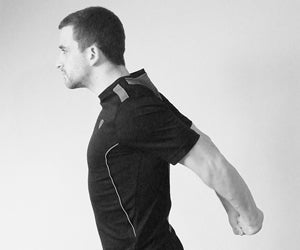
Don’t skip leg day! We all know what that can look like. If you don’t, be warned, it is not a pretty sight. To avoid looking like Johnny Bravo, we’ve included a few leg day workouts for you to try at home. Enjoy! #KeepItUp
1. Front Squat: You are going to need a barbell and a partner. This exercise will be working your quadriceps instead of traditional back squats which work your hamstrings. Set the bar evenly across your front deltoids and collarbone. Palms facing up, fingers towards your back, elbows even with the bar. Start without weight and have a partner guide you through, then slowly build up to weight as you improve. Go into a traditional squat with legs a bit wider than hip width, slowly sink down and then come back up. Avoid buckling in your back. Complete 4-5 sets and then rest and spot of partner.




Jenny Campbell is an adventurous California local who has a very exciting hobby. Jenny kite surfs at Half Moon Bay 3 to 4 times a week. The INVIGORADE team decided to sit down with Jenny and ask her how she got started in such an awesome activity!
INVIGORADE: So how did you get started Kite Surfing?
Jenny: Well the story is really really long. But essentially I had just been living in Africa for 5 years and I was finally moving home. I had a boyfriend and we were deciding on whether or not to move home together, and eventually I moved out and he stayed. Shortly after he had a new girlfriend move in to our apartment. That was awful. I was having a really hard time moving home, so I ended up getting a dog because I missed my dog in Africa so much. But then a few weeks later my dog got hit by a car. It was a really awful time for me. I was just this walking ball of heartbreak. To try and deal with all of this I was running, doing triathlons, I was still climbing, but I could tell something was missing. I wasn’t sure what it was, but something was off. There was something missing in my life. So a few weeks later I went to Greece with some girlfriends of mine, and we took this bus to some random town, we turned the corner and there were all these people kite surfing. And just in that moment I was like ‘Thats it, this is what I’m going to do.’ Just in that second.
Before then I had always known that Kite Surfing was a thing, I just thought it was something crazy people did.
INVIGORADE: Now that you kitesurf, do you still think it is for crazy people?
Jenny: [Laughs] Well yeah. I think they are all a little bit insane in different ways. You definitely need to be a little insane. It is definitely for the crazy people because you need that part of you to be a confident Kitesurfer.
INVIGORADE: So what happened when you came home from Greece?
Jenny: Well I never looked back. It was never a question of how am I going to do this or even if I can do it. It was just ‘I’m doing this now.’ It was really hard. Like really hard. But I put everything I had into Kite Surfing and it just… I don’t want to say it saved me or cured me or anything, but it did. It did totally save my life.

INVIGORADE: How long ago was this?
Jenny: Well, I’ve been kiting for about 4 seasons. When I started I didn’t know anything about it. At all! I started in September, which is at the end of the season. Everyone in the kiting community that I met was telling me that this was the wrong time to start and I should wait until the next season, and I was like, “No you don’t get it, I am starting right now. I am starting today.”
INVIGORADE: So how was your first season kiting?
Jenny: [Laughs] It was a sh** show. I took some lessons, maybe two because they are expensive. But most of it was me driving up to Half Moon Bay, missing the wind and driving home. Or it was me getting tangled up in my lines, losing my board, getting covered in mud. I’m a lot better now, but that first season was hard.
INVIGORADE: So you’ve traveled a lot, where are some of the places you’ve kited?
Jenny: By now I’ve kited in four continents. Europe, Africa, North America, South America, oh and I guess Asia too, thats 5 continents. The best is the Kenyan coast of Africa. In Kenya I saw miles of sand and waist high water for as far as you can see. Thats a place you could actually learn to kite. Here in Santa Cruz you get thrown into the rocks and the waves are huge and the water is freezing cold and deep.
INVIGORADE: Do the waves make a big difference?
Jenny: The wind is more important than the waves. It needs to be the right kind of wind and the right kind of waves, but you make it work even if it’s not perfect.
INVIGORADE: So how often do you kite?
Jenny: Well in season, if it’s a good week I go about 3-4 times a week. If my work lets me or my social life lets me.
INVIGORADE: So, what advice would you give to people who want to kite surf?
Jenny: I would suggest that you understand that there is a huge learning curve. And until you get to a certain point where you can actually do it, it’s not fun. You have to be dedicated and you can’t be like, ‘eh, I’ll try it some day.’ Because it can be really frustrating. You can lose your kite and their are lines everywhere and you can’t find your board and you’re covered in mud and there are rocks closing in. There are awful days definitely. But if you can get past that it is the most fun you will ever have in your life.
So you want to do a Triathlon. What the heck does that mean?
The first thing you need to know is the difference between a sprint Triathlon, Olympic Triathlon, Long course Triathlon and an Ironman.
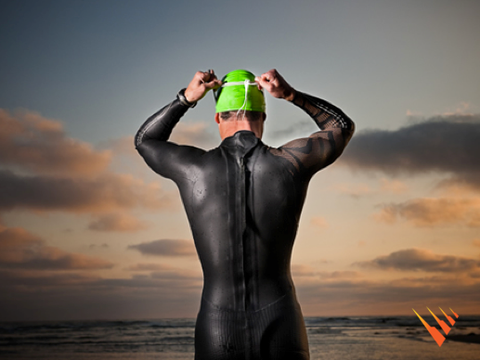
For beginners, we recommend trying out a Sprint Triathlon. The Sprint Triathlon consists of a 750-meter (0.47-mile) swim, 20-kilometer (12-mile) bike, 5-kilometer (3.1-mile) run. It is the shortest of the 4 types of Triathlons and the best to start out with, yet first-time triathletes are often surprised at how difficult the Sprint is! (Recommended 1-2 bottles of INVIGORADE)
The next level up is the Olympic Triathlon, this is the standard Triathlon distance of a 1.5-kilometer (0.93-mile) swim, 40-kilometer (25-mile) bike, and a 10-kilometer (6.2-mile) run. When you hear people talk about how they do Triathlons, this is probably what they are doing. (Recommended 2-4 bottles of INVIGORADE)
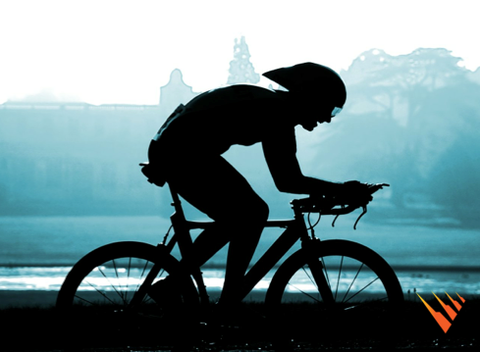
Things start to get out of hand when you want to do Long Course Triathlons. Long Course Triathlons are an intense 1.9-kilometer (1.2-mile) swim, 90-kilometer (56-mile) bike, and a 21.1-kilometer (13.1-mile) run (thats a half marathon!!) This is some serious physical activity. (Recommended 1 full gallon of INVIGORADE!!!)
Finally, we get down to the real deal: Ironmans. The Ironman race consists of a 3.8-kilometer (2.4-mile) swim, 180.2-kilometer (112.0-mile) bike, and a 42.2-kilometer (26.2-mile) run. Thats a century ride and then some followed by a full marathon. (At this point you should just be showering in INVIGORADE the week before)

All of these are challenging physical feats of endurance, each one requires a specific set of skills, and each one is a rewarding experience for all fitness enthusiasts.
So now that you know, pick the one that feels right to you and remember to #keepitup!
Our Partners
